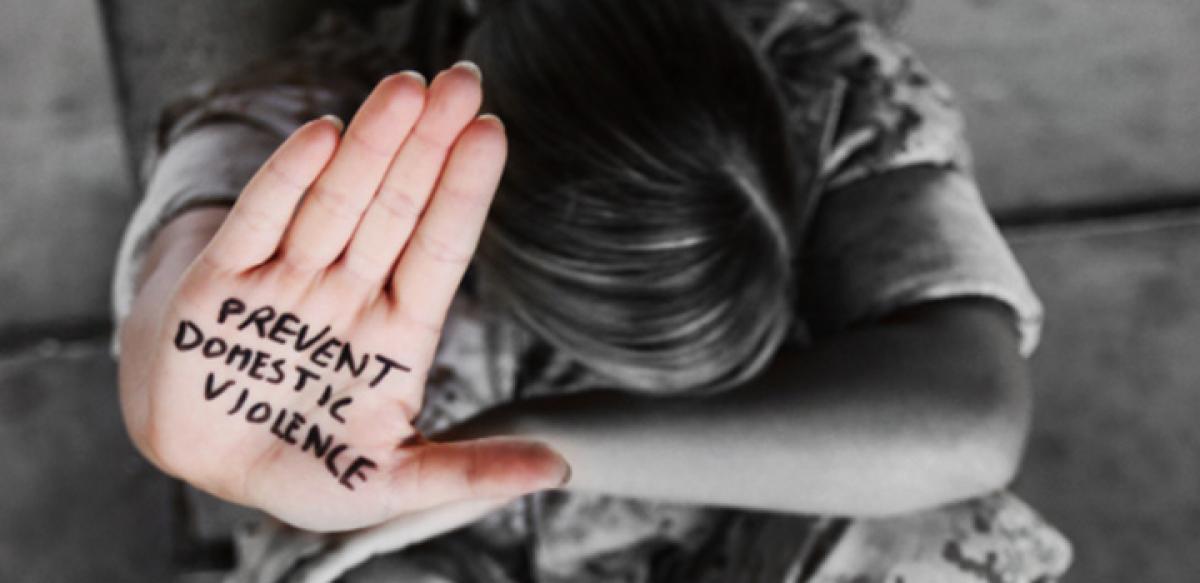Live
- NASA Tracks Five Giant Asteroids on Close Approach to Earth Today
- Pushpa 2 Hits ₹1000 Crore in 6 Days: How It Compares to Other Top Indian Films
- Vivo X200 and X200 Pro Launched in India: Price, Specifications, and Features
- Nitin Gadkari Admits Feeling Embarrassed at Global Summits Over Rising Road Accidents in India
- Comprehensive Review on Indiramma Housing Survey and Welfare Initiatives Conducted via Video Conference
- Jogulamba Temple Records Rs 1.06 Crore Hundi Revenue in 150 Days
- Opposition Slams ‘One Nation, One Election’ Bill as Anti-Democratic; BJP Allies Support the Move
- Celebrate Karthigai Maha Deepam Virtually with Sri Mandir’s LIVE Darshan Experience
- BJP Extends Support to Samagra Shiksha Abhiyan Employees' Strike, Demands Immediate Regularization and Welfare Benefits
- Dr. M. Priyanka Stresses Quality Education, Nutritious Meals, and Cleanliness in Schools
Just In

Crimes against women in India are high and have been rising. Even today the system to a large extent is patriarchal and we have been hesitant in admitting that crimes against women are occurring. Domestic violence against women forms a large part of all crimes against women. Domestic violence cases comprised over 43 per cent of all crimes against women in 2011.
This topic is a part of Developmental Studies
Crimes against women in India are high and have been rising. Even today the system to a large extent is patriarchal and we have been hesitant in admitting that crimes against women are occurring. Domestic violence against women forms a large part of all crimes against women. Domestic violence cases comprised over 43 per cent of all crimes against women in 2011.
It is ironical that while the patriarchal way of life preaches that women should stay within the boundaries of their homes for their own safety, a lot of crimes that are committed against women are reported from the very same confines of their homes. Moreover, people responsible for carrying out these crimes are generally their own relatives.
Women are deceitfully coerced, beaten, threatened, burned and even killed for want of dowry. In most cases they are tortured either mentally or physically to extort money and jewellery from their families. They also face cruelty for negligence of domestic duties and for any sign of independence.
According to National Crime Records Bureau (NCRB) the number of dowry deaths in 2010, 2011, 2012, 2013 and 2014 has been 8,391, 8,618, 8,233, 8,083 and 8,455 respectively. The numbers for cruelty by husband or his relatives for the years 2010, 2011, 2012, 2013 and 2014 were 94,041, 99,135, 1, 06,527, 1, 18,866 and 1, 22,877 respectively.
A lot of women at least in the urban parts of India are now more willing to take legal recourse through enactments such as The Protection of Women from Domestic Violence (PWDV) Act, 2005. It was an enactment that was brought into force by the Indian government in October, 2006. This Act was passed by Parliament in August 2005 and was given assent by the President in September 2005. It extends to the whole of India except the State of Jammu and Kashmir.
Domestic violence includes actual abuse or the threat of abuse—physical, sexual, verbal, emotional or economic.Harassment by way of unlawful dowry demands is also covered. Though in generic and abridged terms the scope of this Act was primarily meant to provide protection to wife or female live-in partner from domestic violence at the hands of the husband or male live-in partner or his relatives, the law also extends its protection to women in a household such as sisters or mothers.
The general process of how a complaint is filed and what happens after that can be summarised very briefly in the following stages. The first stage involves any "aggrieved person" which means any woman who has reason to believe that an act of domestic violence has been, or is being, or is likely to be committed, can give information about it to the Protection Officer(P.O.) concerned.
The Protection Officers play a vital role from the filling in of Domestic Incident Reports (DIRs) to assisting in the enforcement of court orders, P.Os have various functions. After receiving a complaint, the P.O. is required to fill in a DIR and submit it to the magistrate and forward copies to the police officer in charge of the police station concerned and to Service Providers (S.P.) in the area. The P.O. can either be a non-governmental organisation (NGO) or a government official.
The Governments can also appoint anyone exclusively as P.O. holding independent charge. Finally the last stage is that of prosecuting the crimes and receiving the judgments from the courts. This law is meant only for women (aggrieved person) who are victims of domestic violence. A woman (aggrieved person) who is a victim of domestic violence can also file a case directly in a court of law. The Domestic Violence Act, which provides victims of abuse with remedy, also mandates safe shelters to victims.
But despite the stern nature of the Domestic Violence Act, rates of domestic violence have far from reduced and law enforcement agencies have fallen short in limiting the same. Experts suggest that an increase in the number of protection officers, aiding the protection officers with proper infrastructure and manpower,
improved coordination, monitoring and evaluation of the Act, an increase in budget allocation, training officials on the Domestic Violence Act and holding seminars to spread awareness both in rural and urban areas are necessary so that this law would work as a preventive measure to eradicate crimes of this nature.

© 2024 Hyderabad Media House Limited/The Hans India. All rights reserved. Powered by hocalwire.com







